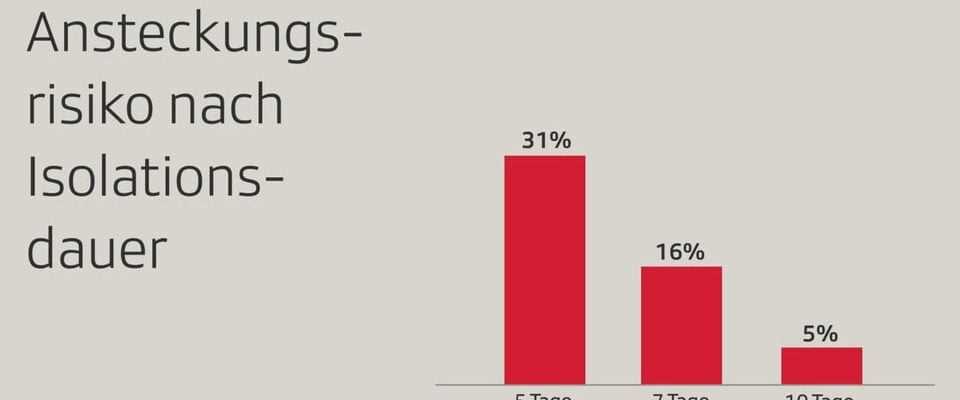This week, the Federal Council reduced the isolation for corona infected people to five days, provided they are symptom-free for 48 hours. With the decision came doubts: Is the risk too high given the horrendous number of cases?
A study by the British “Health Security Agency” confirms possible doubts: After isolation, which was ordered five days after a positive PCR result, 31 percent are still contagious. In other words: around every third person.
Legend:
SRF
Although the 48-hour rule is useful, it is still acceptable to release people from isolation who are still contagious, says SRF science editor Katrin Zöfel: “It is a model study that brings together all the data that you have about contagion times.”
The caveat: the numbers used in the British study were collected before Omicron. With a view to the new virus variant, you are still flying blind. However, the British study is supported by a Study from Japan, which was already processing data on Omikron. These would show that the viral load was highest three to six days after infection or the onset of symptoms, says Marcel Salathé, epidemiologist at EPFL Lausanne.
Free testing as a solution
You can also see in practice: “Patients get sick faster after infection, but they are sick for less time,” says Felix Huber, deputy chief physician at the MediX practice in Zollikerberg. “The disease is often milder. But of course there are also hospitalizations at Omikron, these people are usually not vaccinated. Vaccination and boosters would also be important for Omikron.”
You can have the fiver and the Weggli.
The family doctor is of the opinion: testing can help. He suggests the antigen test at a test center, at a doctor’s or at a pharmacy. If this were done on the 5th day of isolation and it was negative, it would be a good guarantee that you were no longer contagious.
Marcel Salathé is also of the opinion that the 5-day isolation is risky, but combined with a test it can be designed as responsibly as possible. “You can have the fiver and the Weggli.”
He advocates rapid tests. These would indicate quite well whether someone is currently infectious or not. The main advantage of the rapid tests is that they are cheap and, above all, available in large capacities. It makes sense to use such a practical tool, even if it’s not perfect. Therefore, the epidemiologist also wishes that the self-tests would be free again. It is conceivable that the federal government will send each person who tests positive a certain number of these rapid tests.
Test capacity basically available
Free testing via antigen test would not only require test kits, but also appropriate capacities. These are always very variable, says the manager of the test and vaccination center in Winterthur, Thomas Kraft: “If many events take place, people want to attend them and there is also a free test, that could exceed our capacities by far. If things are like they are now and people are reluctant to attend events, we have enough capacity.”
Especially compared to Christmas, the utilization is currently 40 percent lower. However, the pandemic has taught us that this can change quickly.
Science editor, epidemiologist and doctor all agree: The 5-day isolation is risky. But testing is one way to make it more secure.
